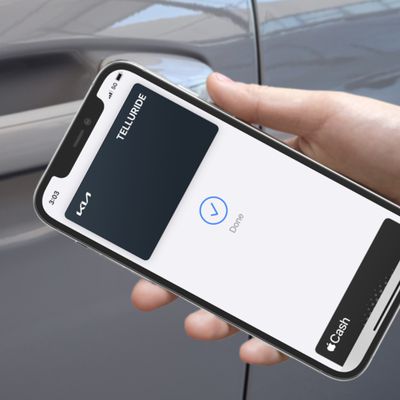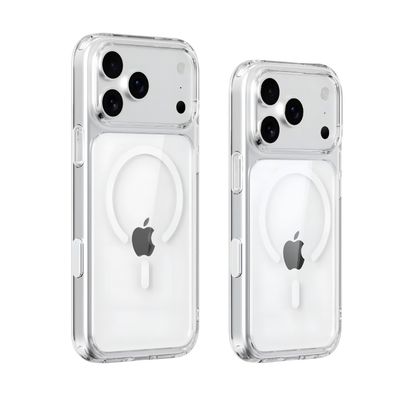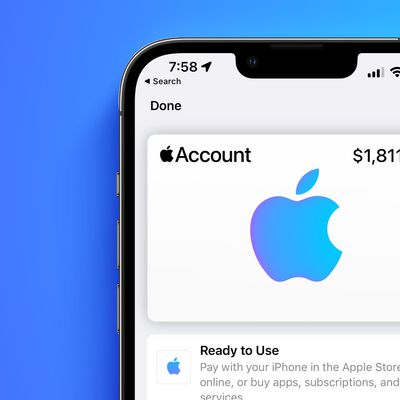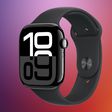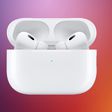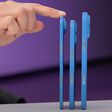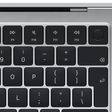Airline Industry Remains Divided Over Personal Electronics Usage During Takeoff and Landing
 Earlier this year, we noted that the U.S. Federal Aviation Administration (FAA) was continuing to look at the use of personal electronic devices during the taxi, takeoff, and landing phases of commercial flights, hoping to take action by the end of the year to loosen restrictions currently requiring that all devices be powered down during these times.
Earlier this year, we noted that the U.S. Federal Aviation Administration (FAA) was continuing to look at the use of personal electronic devices during the taxi, takeoff, and landing phases of commercial flights, hoping to take action by the end of the year to loosen restrictions currently requiring that all devices be powered down during these times.
Bloomberg now provides another update on the situation, noting that the airline industry remains divided over whether restrictions should be relaxed as reports of possible interference between these devices and aircraft electronics continue to surface. The report leads with a brief anecdote involving an iPhone:
The regional airliner was climbing past 9,000 feet when its compasses went haywire, leading pilots several miles off course until a flight attendant persuaded a passenger in row 9 to switch off an Apple Inc. iPhone.
“The timing of the cellphone being turned off coincided with the moment where our heading problem was solved,” the unidentified co-pilot told NASA’s Aviation Safety Reporting System about the 2011 incident. The plane landed safely.
Despite the fact that correlation does not necessarily imply causation, some pilots and airlines remain concerned over the potential impact of these electronic devices on their aircraft. The International Air Transport Association collected a list of 75 suspected cases of interference between 2003 and 2009 and airlines are continuing to see occasional reports, although some remain in favor of relaxing the regulations.
Even Delta Air Lines Inc., which argued for relaxed rules, told the U.S. Federal Aviation Administration its pilots and mechanics reported 27 suspected incidents of passenger electronics causing aircraft malfunctions from 2010 to 2012. Atlanta-based Delta said it couldn’t verify there was interference in any of those cases.
The airline industry has been divided. Delta said in its filing that it welcomes more electronics use because that’s what its passengers wanted. United Continental Holdings Inc. said it preferred no changes because they’d be difficult for flight attendants to enforce.
Just last week, a study indicated that 30% of U.S. airline passengers who have brought electronic devices onboard have accidentally left them on at least once.
With increased connectivity in the air through in-flight Wi-Fi and pilots even taking advantage of iPads to replace their traditional flight bags weighing 30-40 pounds, consumer demand for increased access to their electronic devices during flight has raised visibility of the debate over whether such devices pose risks during critical phases of flight. For now, the debate continues to play out as both sides seek to use scientific data to back up their positions.
Popular Stories
Since the iPhone X in 2017, all of Apple's highest-end iPhone models have featured either stainless steel or titanium frames, but it has now been rumored that this design decision will be coming to an end with the iPhone 17 Pro models later this year.
In a post on Chinese social media platform Weibo today, the account Instant Digital said that the iPhone 17 Pro models will have an aluminum...
Apple is continuing to refine and update iOS 26, and beta three features smaller changes than we saw in beta 2, plus further tweaks to the Liquid Glass design. Apple is gearing up for the next phase of beta testing, and the company has promised that a public beta is set to come out in July.
Transparency
In some apps like Apple Music, Podcasts, and the App Store, Apple has toned down the...
The calendar has turned to July, meaning that 2025 is now more than half over. And while the summer months are often quiet for Apple, the company still has more than a dozen products coming later this year, according to rumors.
Below, we have outlined at least 15 new Apple products that are expected to launch later this year, along with key rumored features for each.
iPhone 17 Series
iPho...
Apple should unveil the iPhone 17 series in September, and there might be one bigger difference between the Pro and Pro Max models this year.
As always, the Pro Max model will be larger than the Pro model:iPhone 17 Pro: 6.3-inch display
iPhone 17 Pro Max: 6.9-inch displayGiven the Pro Max is physically larger than the Pro, it has more internal space, allowing for a larger battery and...
In 2020, Apple added a digital car key feature to its Wallet app, allowing users to lock, unlock, and start a compatible vehicle with an iPhone or Apple Watch. The feature is currently offered by select automakers, including Audi, BMW, Hyundai, Kia, Genesis, Mercedes-Benz, Volvo, and a handful of others, and it is set to expand further.
Apple has a web page with a list of vehicle models that ...
New renders today provide the best look yet relocated Apple logo and redesigned MagSafe magnet array of the iPhone 17 Pro and iPhone 17 Pro Max.
Image via Majin Bu.
Several of the design changes coming to the iPhone 17 Pro model have been rumored for some time, such as the elongated camera bump that spans the full width of the device, with the LiDAR Scanner and flash moving to the right side.
...
Apple's next-generation iPhone 17 Pro and iPhone 17 Pro Max are just over two months away, and there are plenty of rumors about the devices.
Below, we recap key changes rumored for the iPhone 17 Pro models.
Latest Rumors
These rumors surfaced in June and July:Apple logo repositioned: Apple's logo may have a lower position on the back of the iPhone 17 Pro models, compared to previous...
Apple is expanding the ability to add an Apple Account Card to the Wallet app to more countries, according to backend Apple Pay changes.
With iOS 15.5, Apple updated the Wallet app to allow users to add an Apple Account Card, which displays the Apple credit balance associated with an Apple ID.
If you receive an Apple gift card, for example, it is added to an Apple Account that is also...
 Earlier this year, we noted that the U.S. Federal Aviation Administration (FAA) was continuing to look at the use of personal electronic devices during the taxi, takeoff, and landing phases of commercial flights, hoping to take action by the end of the year to loosen restrictions currently requiring that all devices be powered down during these times.
Earlier this year, we noted that the U.S. Federal Aviation Administration (FAA) was continuing to look at the use of personal electronic devices during the taxi, takeoff, and landing phases of commercial flights, hoping to take action by the end of the year to loosen restrictions currently requiring that all devices be powered down during these times.





